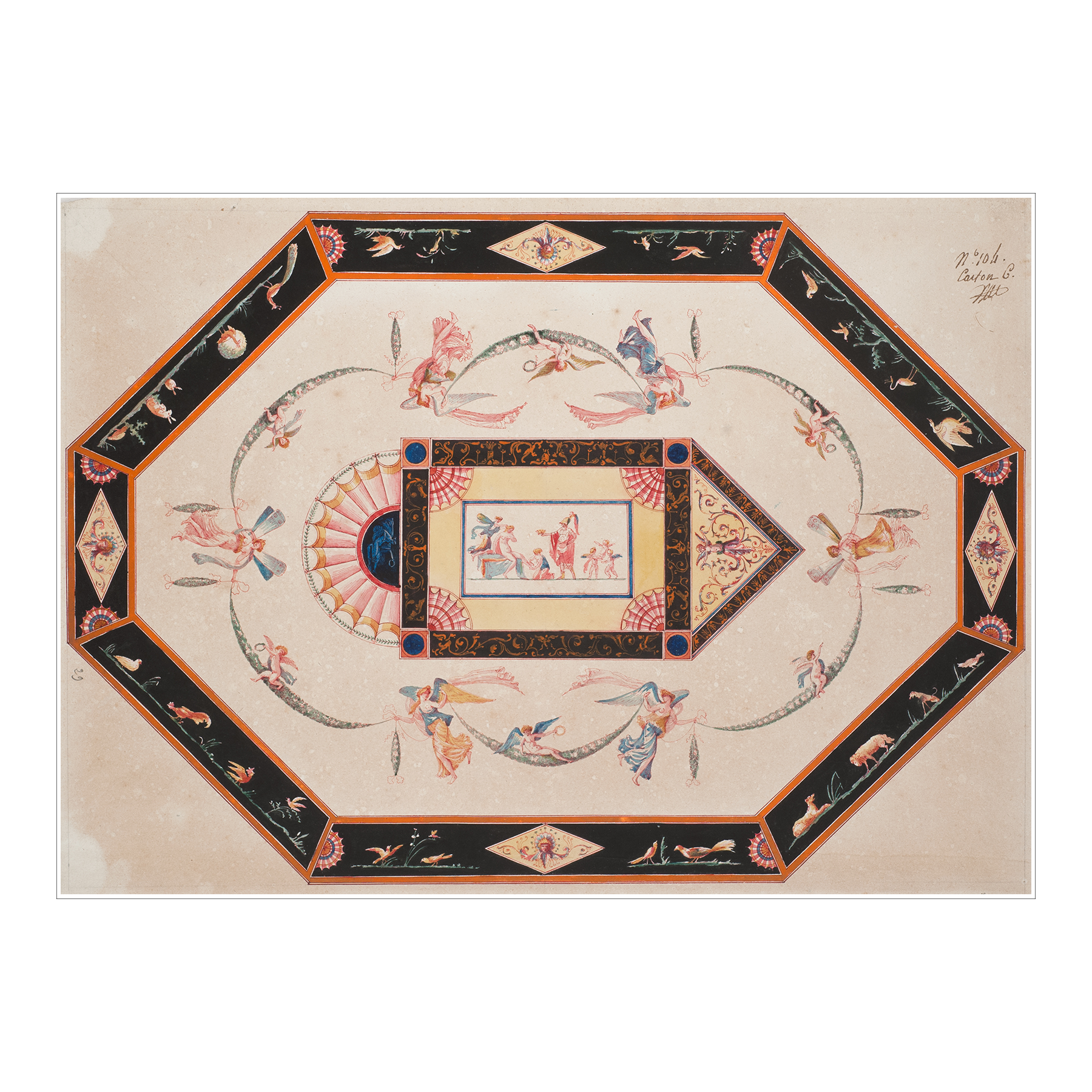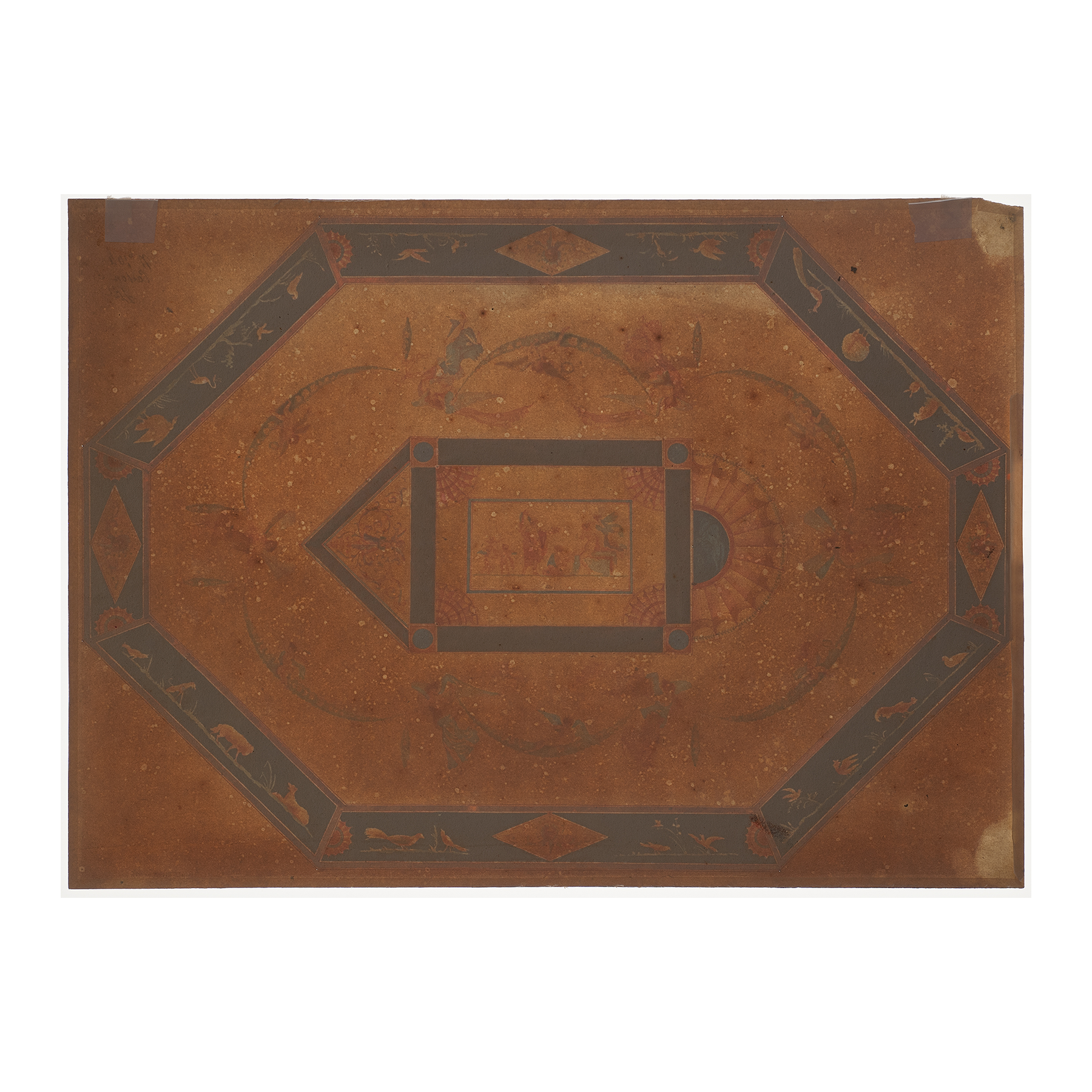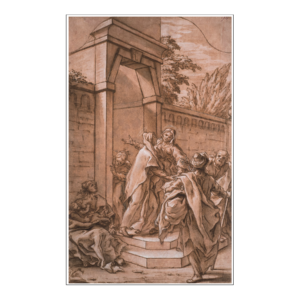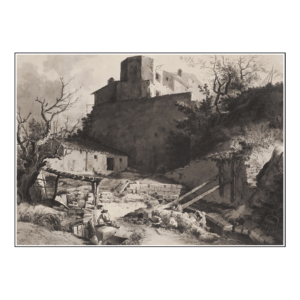François-Joseph Bélanger
Paris 1744-1818
Project for an octagonal ceiling decoration
Pen, black and red ink, watercolor and gouache on traces of pencil.
300 x 450 mm – 11 13/16 x 17 3/4 in.
Inventory number N°104, carton 6 and initialling with pen and ink upper right (according to Peter Fuhring, the annotation and initialling could be those of the notary who cataloged the portfolios in which the drawings were classified by subject).
Traces of measuring with pencil. Inscribed 29 with the pencil lower left.
Provenance – probably from the artist’s studio; his sale, Paris, 12 June 1818, n° 55 to 61 (portfolios containing numerous projects and architectural plans).
Literature – Peter Fuhring, François-Joseph Bélanger (1744-1818), Les Cahiers du Dessin Français, n° 15, Didier Aaron & Cie and Galerie de Bayser, Paris, 2006, n° 26, p. 21, ill. p. 52.
A French architect and interior designer, François-Joseph Belanger belonged to the trend of classical revival and Antiquity fashion like his fellow architects Alexandre-Theodore Brongniart and Pierre-Adrien Pâris. A pupil of the Royal Academy of Architecture, he was appointed to the royal administration of Menus-Plaisirs in 1767 and created numerous decorations for festivities and celebrations. He then became First Architect to the King’s brother, the Comte d’Artois.
This drawing is a project for a painted ceiling, maybe in a private Parisian mansion. It recalls the frescoes of Pompeii, Herculaneum, Pozzuoli, and Paestum, widely promoted from the 17th century onwards thanks to the engraved works of Italian artists such as Pietro Santi Bartoli. Although Bélanger never went to Italy, his compositions and ornaments were extensively inspired by printed books compiling antiques paintings and models, such as Descriptions des bains de Titus ou Collection des peintures trouvées dans les ruines des thermes de cet empereur by Giovanni Battista Piranesi and Nicolas Ponce, printed in Paris in 1786, a book of which Bélanger owned several copies (see Fuhring, op. cit. p. 8).
Bélanger opted for an octagonal shape in this ceiling project. A mythological scene – maybe Mars and Venus – is represented in the center on a white background. On the right-hand side, the scene is framed by a triangle with arabesques on a yellow background, but by half a pink roundel with a central lapis lazuli medallion on the left-hand side. A floral garland held by female winged figures and putti, surrounds this central motif. The whole composition is surrounded by a large and black border containing four lozenges with grotesque motives on a yellow background, separated by processions of birds, peacocks, dogs, and hares. This project perfectly exemplifies the taste for rich colors and highly refined motives developed in 18th-century Parisian interior decoration. Similar decorative patterns can be observed in many of the artist’s projects in the Louvre Museum, such as Project for wood paneling in M. Morel’s boudoir (Inv. 54442).
Like all architects of his time, Bélanger was assisted by many partners such as sculptor Nicolas François Daniel Lhuillier (1737 – 1793) and painter Pierre Cietty (1763 – 1794) in the conception of stucco or painted decors.
Condition reports – Irregularly yellowed paper (visible on the photography) – a small loss in the upper left corner.







